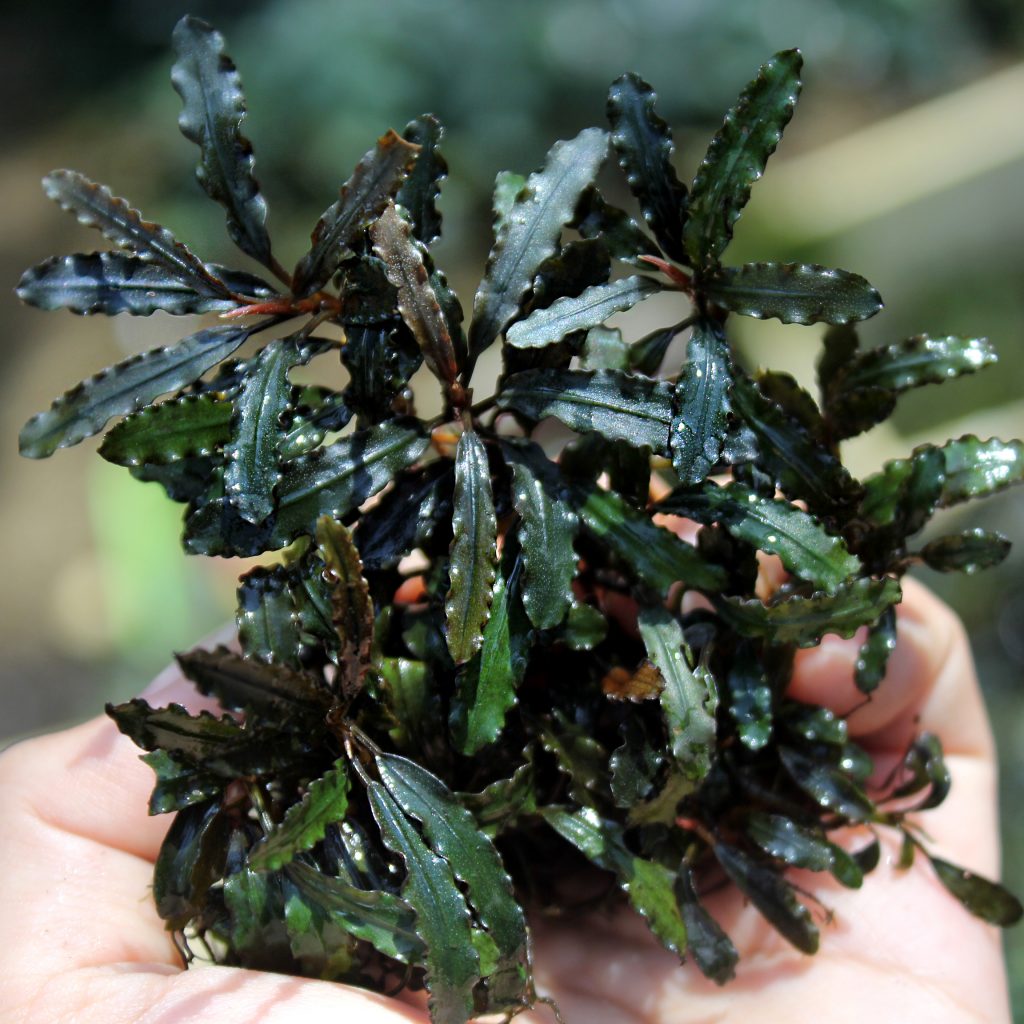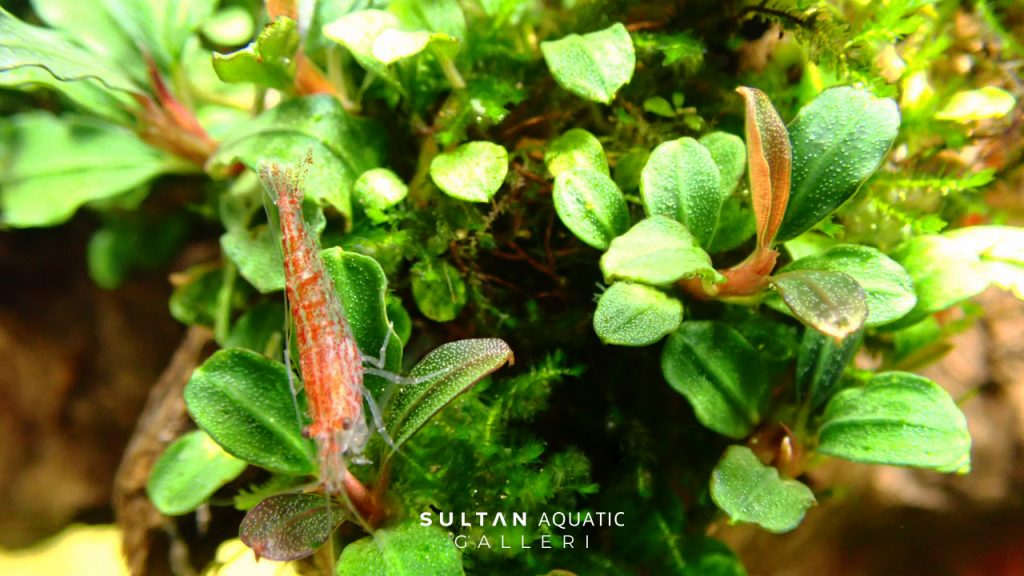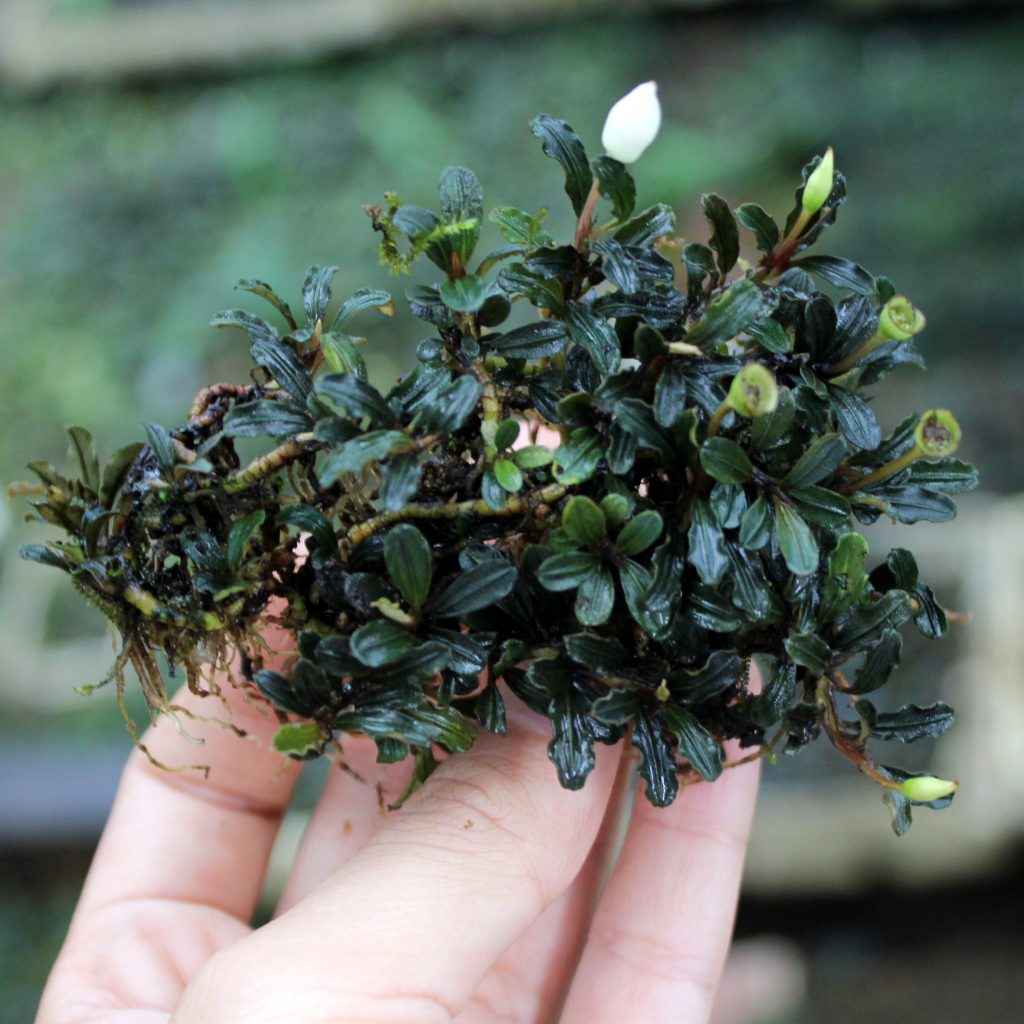Are you familiar with the water plant Bucephalandra or what is commonly known as Buce? may sound familiar to some people. But the plants that grow in the interior of the forest are very familiar in Borneo, or Kalimantan. Yes, Buce is one of the high economic value aquatic plants. This plant must be imported directly from Indonesia.

Bucephalandra is one type of semiaquatic plant that is becoming the belle of aquascape lovers in America and especially Japan. The leaves are fresh green, purple with beautiful white flowers. This plant is easy to care for but slow to grow. This plant only exists in Indonesian Borneo. Besides that, the growth tends to be slow. This is actually an opportunity. It’s leaf shape and elegant color make this plant a target for hunting aquascapers around the world. The exotic and endemic to the island of Borneo makes this plant a magnet for Aquatic plant collectors around the world.
Talking about aquascape will never end. There are always new things that make the art of arranging aquatic plants, ornamental fish, and ornamental shrimp in this aquarium even more attractive. This time the hot news came from an increasingly revered aquatic plant, Bucephalandra. There are always new things that make the art of arranging aquatic plants, ornamental fish, and ornamental shrimp in this aquarium even more attractive. The Bucephalandra plant care is very easy and not difficult.

This time the hot news came from an increasingly revered aquatic plant, Bucephalandra. For some Aquascape hobbyists in Indonesia, they may already be familiar with Bucephalandra, or are currently collecting them. This native Kalimantan aquatic plant is indeed being hunted by foreign aquascape hobbyists.
Since being popularized by Nakamoto — a Japanese water plant collector — in 2014, aquascape hobbyists from Thailand, Japan, Hong Kong, China, and even Europe have been looking for the existence of this plant. Bucephalandra is known as a foreground plant. It is named Bucephalandra because of the flower shape that at first glance resembles a bull’s horn. Its uniqueness is even more perfect because this plant has a variety of color variants, from green, purple, brown, to dark green. The shape of the leaves also varies, some are pointed, round, and so on. In fact, there are figures of this plant that are quite large, medium, and some are even mini. Bucephalandra plant care can life everywhere. Look at the following information
The Things About Bucephalandra Plant Care
Today, there are dozens of Bucephalandra species on the market, traded under hundreds of different names. Bucephalandra can grow on wood, tree roots, and coconut, but my observations suggest that the root system of this plant is better developed on hard surfaces, such as various types of rock. Roots have the ability to grow to hard surfaces, Bucephalandra can grow in only dim light, Bucephalandra will continue to grow and will still produce new leaves, but the color of this plant is usually not eyecatching.
Bucephalandra can also grow in paludariums, but the color of the leaves tends to be weaker, and the leaves tend to be less elastic. They must be placed with high humidity to thrive in this environment, or else the leaves will dry out and die. The water parameters for Bucephalandra plant care can tolerate are as follows: pH range 58, temperature 2228 degrees Celsius. I noticed they could not tolerate temperatures higher than 28 degrees Celsius because it could cause the leaves to rot.
The leaves of Bucephalandra are very flexible due to the aquatic environment in which they are found. For bucephalandra It is generally said that they are slow growing plants, but if you provide them with strong light, good fertilization and lots of CO2, you will achieve the fastest growth. The leaves are fresh green, purple with beautiful white

flowers, as well as the types of plants that are easy to care for and slow in growth and the elegant leaf shape makes this plant a target for hunting aquascapers around the world.
The exotic and endemic to the island of Borneo has made this plant sought after by Aquatic plant collectors around the world Bucephalandra is known as a foreground plant. To make the colored leaves stronger necessary lighting (0.5watt per liter or more), and additional fertilization rich in Fe. A little CO2 and fertilizer can help plants display attractive colors. I was told that the new leaves of the plants planted in their tanks were not colorful because of the lack of light and they didn’t use much fertilizer for the Bucephalandra plant care.
Named Bucephalandra because of the flower shape that at first glance resembles a bull’s horn. This uniqueness is even more perfect because this plant has a variety of color variants, from green, purple, brown, to dark green. The shape of the leaves also varies, some are pointed, round, and so on. In fact, there are figures of this plant that are quite large, medium, and some are even mini.
Today, there are dozens of Bucephalandra species on the market, traded under hundreds of different names. Bucephalandra plant care can grow on wood, tree roots, and coconut, but my observations suggest that the root system of this plant is better developed on hard surfaces, such as various types of rock. Roots have the ability to grow to hard surfaces, Bucephalandra can grow in only dim light, Bucephalandra will continue to grow and will still produce new leaves, but the color of this plant is usually not eyecatching.